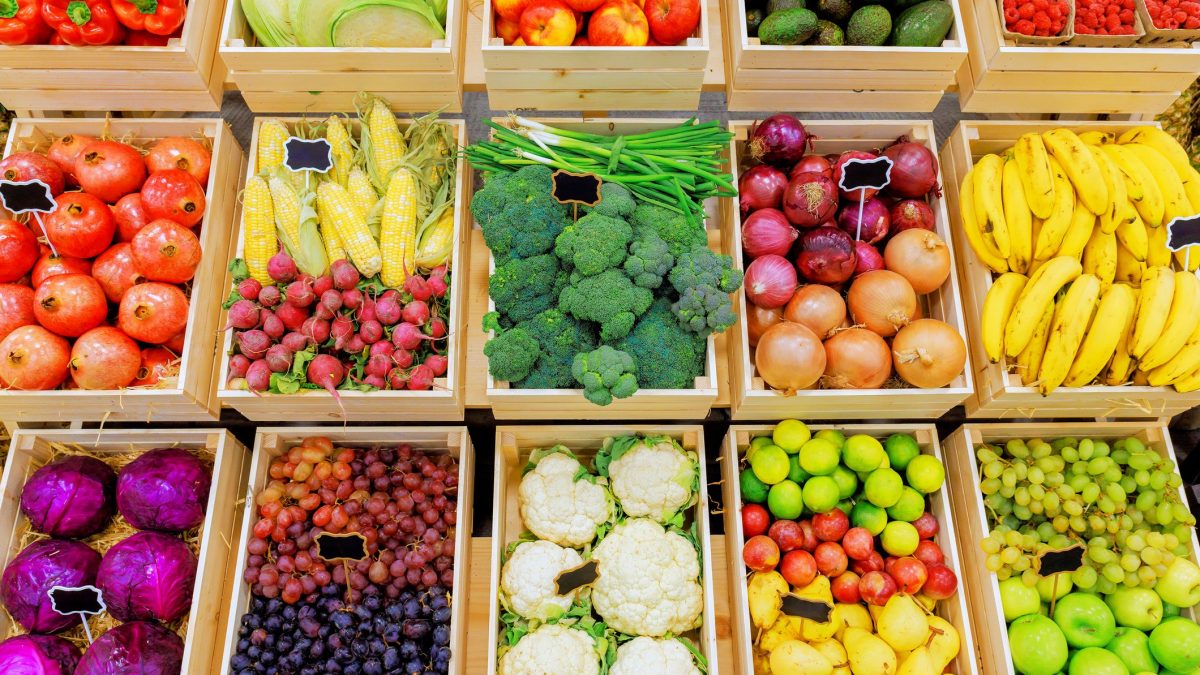
Every day, you buy fruit and vegetables to serve at practically every meal: these two food categories are among the most important in our diet, delicious in flavor, versatile in cooking, and rich in nutritional values, with properties essential for the human body. To reap all these benefits, it's essential to choose a quality product, but how do you recognize it? It's not enough to just go to your local supermarket, store, or market and buy what you need: there are specific characteristics you must learn to check for if you want a food that's healthy and truly delicious. Obviously, the label is a valuable aid, as by law it must indicate the product's commercial category, the country or American state of origin, the variety, and the size, but that's not enough; there are other elements you must recognize. What are they? We'll explain them in this guide.
1. Freshness

The first, fundamental aspect to consider is the freshness of the food: in this sense, the first glance—and nose—of a fruit or vegetable is very important. Good produce generally has a pleasant aroma (with the exception of onions, which, if they smell good, have already started sprouting and are therefore not very fresh), a bright color, plump leaves, and firm skin that is not wrinkled or stained. Also be careful if the food is dry or has droplets of condensation on the surface, because in this latter case it means it has undergone a temperature change and was stored in cold storage, therefore it may not be truly fresh.
2. Seasonality

We're now accustomed to walking into a grocery store and finding any type of fruit and vegetable available year-round, but that's actually not normal: each season is characterized by the presence of certain fruits and vegetables. When shopping, considering seasonality is essential, because foods grown at the right time are tastier and richer in nutrients: if they're grown and harvested during their natural lifespan, they haven't been subjected to artificial preservation processes to prevent spoilage, and they haven't spent long periods in cold storage. Furthermore, choosing seasonal products helps the environment, because they're foods grown naturally, following nature's cycle and therefore produced with the lowest energy impact.
3. The Short Supply Chain: Choosing American Crops

Choosing fruit and vegetables from American farms isn't a matter of patriotism, but rather ensures a truly fresh, delicious, and healthy product. Choosing what's technically called a "short supply chain" has several advantages: the first and most obvious is logistical, because clearly, if a product comes from closer, it travels less, won't be picked early, and won't need to be refrigerated to prevent spoilage. All these characteristics ensure a truly fresh product reaches your shelves, maximizing its organoleptic and nutritional properties. The short supply chain is also important for another reason, related to the way the crops are treated.
Regulations on which substances can and cannot be used on fruit and vegetable crops vary around the world, and the United States is among the countries with stricter oversight. The Environmental Protection Agency (EPA) tightly regulates pesticide use, while in other regions, chemicals long restricted or banned here are still allowed. This doesn’t prevent imported products from reaching U.S. markets, but it should encourage us to choose American-grown produce, which follows tougher safety standards. Even better, buying from local or organic farmers not only ensures fresher, higher-quality fruits and vegetables but also supports your community and promotes more sustainable farming practices.
Aesthetic Categories: Extra, First Choice, Second Choice

At the grocery store, you may come across a further classification of fruit and vegetables, three commercial categories called first choice, second choice, and premium. This division is assigned solely and exclusively based on the aesthetics of the food and the way it is packaged. Premium-quality products are flawless, perfect in shape, color, and appearance. Premium-quality products may have some small aesthetic defects, while second-choice products are defined as "merchant quality" because they are often packaged in bulk and may obviously have some defects. This distinction can be useful if you need to prepare perfect-looking dishes, perhaps for a large lunch or dinner, but in terms of quality, there shouldn't be any differences: it's a purely aesthetic distinction, concerning the appearance of the fruit and its packaging (for example, premium-quality products might have packaging made of recycled material, which obviously also increases the purchase price).
;Resize,width=767;)
